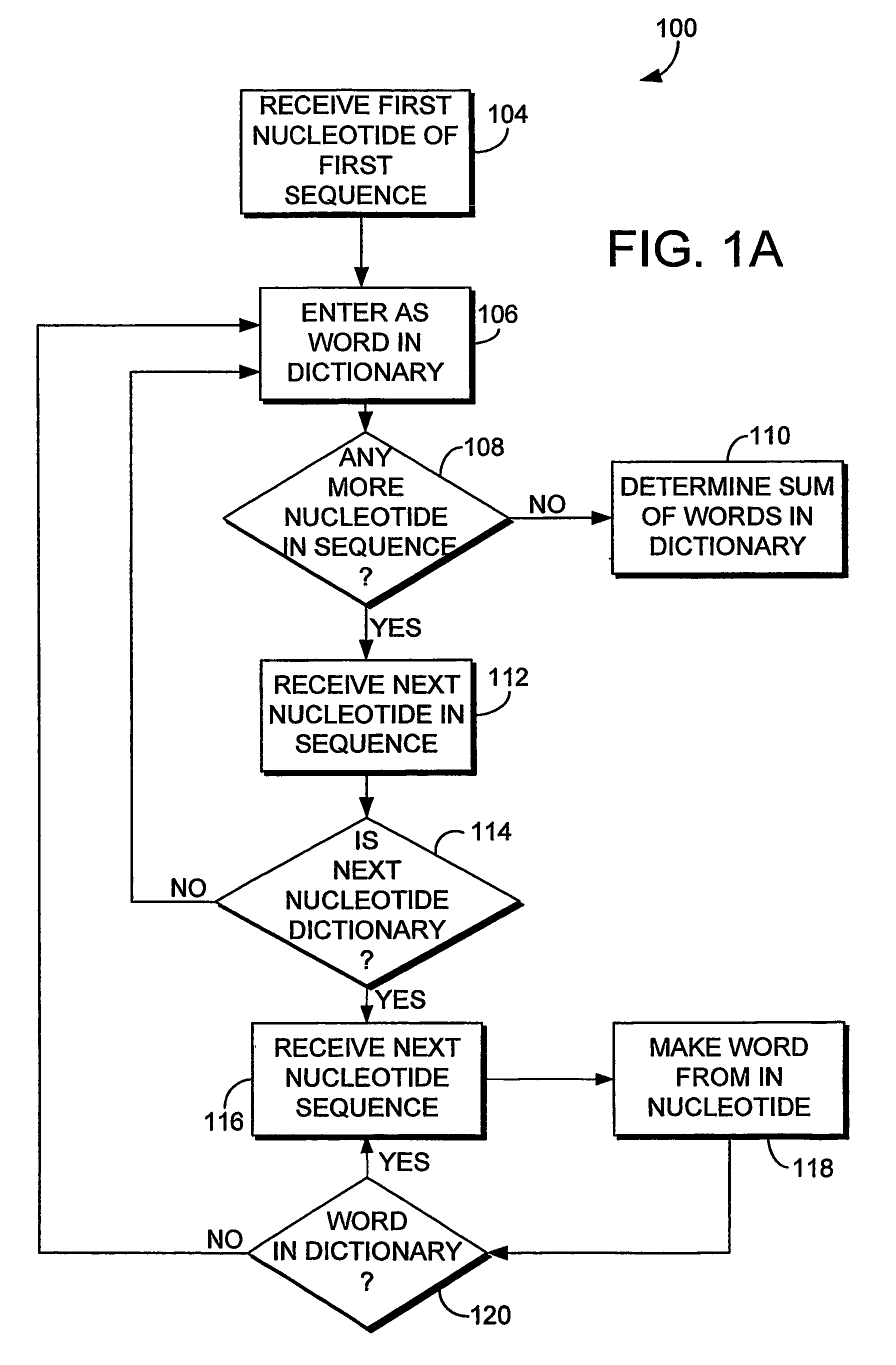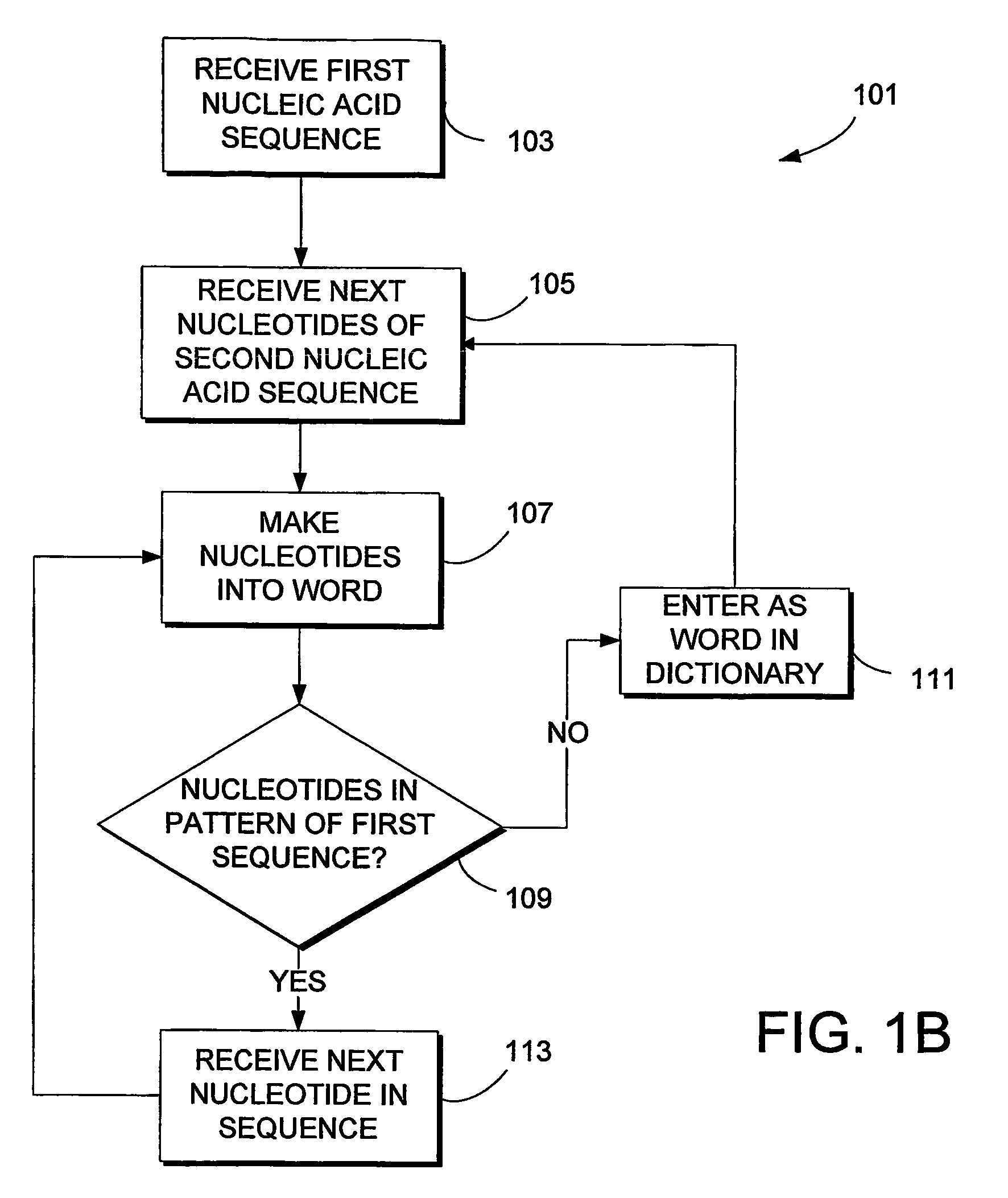System and method for sequence distance measure for phylogenetic tree construction
a phylogenetic tree and sequence distance technology, applied in the field of system and method for sequence distance measurement for phylogenetic tree construction, can solve the problems of insufficient methods for phylogenetic analysis using complete genomes, computationally expensive approaches, and difficult phylogenetic analysis of species using single gene sequences
- Summary
- Abstract
- Description
- Claims
- Application Information
AI Technical Summary
Benefits of technology
Problems solved by technology
Method used
Image
Examples
example 1
[0062]In this example it is shown how all four distance measures defined above satisfy the first three conditions and are, therefore, valid distance metrics. The fourth condition was tested by comparing a distance matrix created by the proposed metrics with one reconstructed from the branch lengths of the resulting tree.
[0063]LEMMA 1. c(SQ)−c(S)≦c(ST)−c(S)+c(TQ)−c(T)
[0064]PROOF. First note:
c(STQ)−c(ST)≦c(TQ)−c(T). (1)
[0065]The LHS of (1) is the number of components Q would have when parsed using ST and the RHS is the number of components Q would have when parsed using T. Having ST instead of T cannot increase the number of components in parsing of Q. Since c(SQ)−c(S)≦c(STQ)−c(S), using (1) we have c(SQ)−c(S)≦c(ST)−c(S)+c(TQ)−c(T).
[0066]COROLLARY 1. c (Q)≦c(TQ)
[0067]PROOF. Let S=ε, the empty string, in Lemma 1.
[0068]Let S=A(n) denote the sequence obtained by n−1 concatenations of the sequence A to itself. For the remainder of this example, if S=A(n), consider S to be equal to A.
[006...
example 2
[0090]In this example it is shown that the proposed distance measures, which are based on the relative complexity between sequences, imply the evolutionary distance between organisms. The distance between sequences S and Q was obtained using the exhaustive histories of the sequences S, Q, SQ and QS. These exhaustive histories were obtained by parsing the sequences using the production rules described earlier. The number of components in he exhaustive histories, c(S), c(Q), c(SQ) and c(QS) were then used as described above to compute the various distance measures.
[0091]Phylogenetic analysis based on DNA sequences has been intimately connected with multiple alignment. Hence this embodiment of the present invention can be generally examined based on how well the implicit assumptions used for scoring the multiple alignment agree with particular evolutionary theories. As this embodiment does not depend on multiple alignments the validity of the embodiment is tested in two ways: using sim...
example 3
[0096]In this example, it is shown that the proposed method agrees with existing phylogenies based on both whole genome and individual gene sequences. The phylogeny of eutherian orders has been unresolved due to conflicting results obtained from comparison of Distance matrix used to construct the NJ tree, T; distance matrix reconstructed from the branch lengths of T and the difference of the two matrices are shown respectively whole mtDNA sequences and individual proteins encoded by mtDNA. See [9] Studies using the whole mtDNA sequences suggest the outgroup status of rodents relative to ferungulates and primates [Rodents (Ferungulates, Primates)] while phylogenies using individual proteins confirm the grouping of rodents with primates. There have even been conflicting topologies resulting from the use of different proteins in constructing the evolutionary history.
[0097]The first group of sequences was chosen from the controversial data set using the following mtDNA sequences from Ge...
PUM
 Login to View More
Login to View More Abstract
Description
Claims
Application Information
 Login to View More
Login to View More - R&D
- Intellectual Property
- Life Sciences
- Materials
- Tech Scout
- Unparalleled Data Quality
- Higher Quality Content
- 60% Fewer Hallucinations
Browse by: Latest US Patents, China's latest patents, Technical Efficacy Thesaurus, Application Domain, Technology Topic, Popular Technical Reports.
© 2025 PatSnap. All rights reserved.Legal|Privacy policy|Modern Slavery Act Transparency Statement|Sitemap|About US| Contact US: help@patsnap.com



